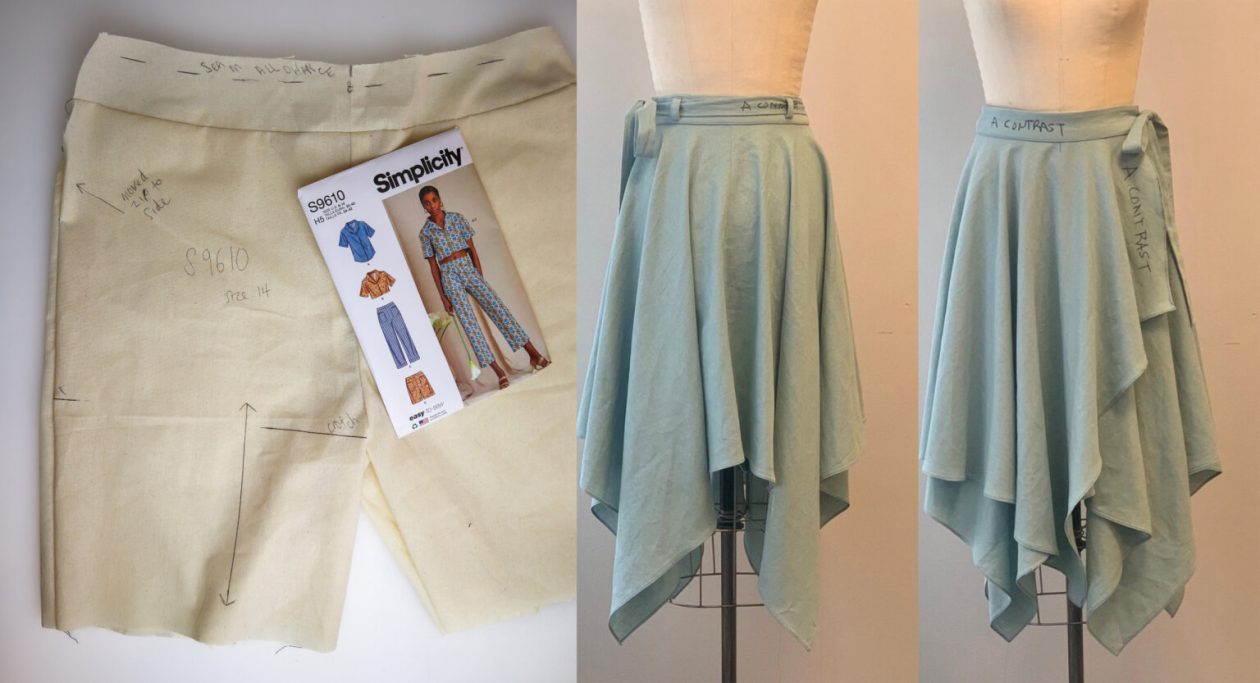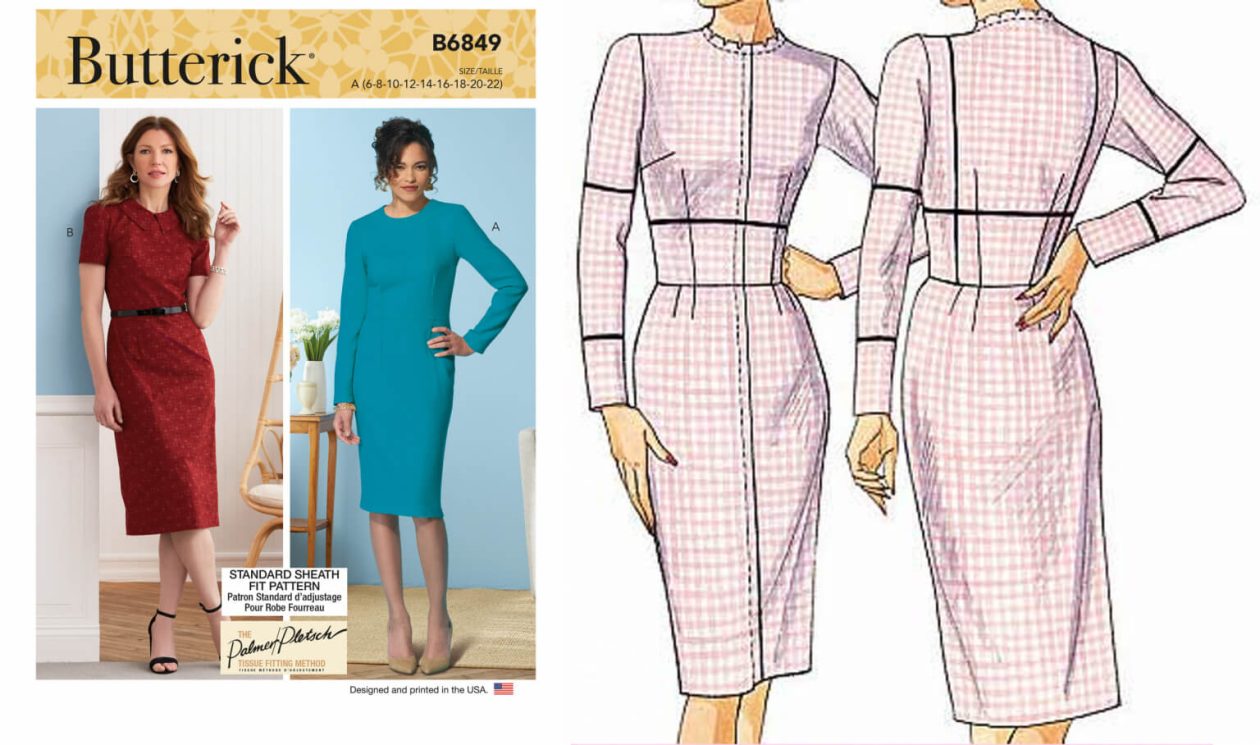
What is a toile? And why make one!
WHAT IS A TOILE?
Have you struggled to make your sewing project fit straight out of the envelope? Not sure what fit changes you need to make? You’d probably benefit from making a toile.
A toile is a simple mock up version of a pattern, often in calico or muslin fabric. Toile is a type of fabric that is lightweight and inexpensive so it is often used for samples. You may also have heard the phrase “make a muslin” in sewing circles. The terms can be used interchangeably!
You’re testing the pattern out before you commit to your intended fashion fabric and get the confidence you need to move ahead. This could be just deciding what size to make, or practicing your pattern alterations for full busts, sway backs or height adjustments.
Other reasons to make a toile can be to test out the style of a garment if it isn’t something you normally wear. Or have a practice run at any tricky construction steps you might not be familiar with. You could be jumping straight into a pattern hack or merging pieces from multiple patterns together to create something totally new.

RIGHT) This trouser toile of S9610 is made to shorts length in calico with size info and helpful markings transferred onto the fabric.
(LEFT) Even our pattern designers use toiles. This V1872 mock up helped them check the construction and visualise the design lines.
WHAT FABRIC TO USE
- Toile and calico are excellent fabrics to practice in as they can be bought by the roll for relatively little. But using a fabric that behaves just like your fashion fabric will work better.
- For instance you’ll need to use jersey on a stretch knit pattern and something drapey is best if you’re sewing a satin or challis project.
- Use large scraps left over from other projects or shop end of line sales to find ends of rolls and large remnants to work with.
- Light coloured plain fabrics are best as you can add helpful markings onto the toile to work out your fit requirements.
HOW MUCH OF A TOILE TO MAKE
You don’t have to make the entire garment in order to get the information you need. To fit your upper half sew a bodice with sleeves (if the pattern includes them) but skip facings if they’re turned to the inside. For shirts you’ll want to add at least the stand part of the collar so you can tell if the neck will be too tight.
For trousers and skirts only make your toile as long as your hips to identify the fit around the waist and hips without wasting fabric on the full length. For gathered or voluminous designs with lots of ease you can choose to skip this stage if you’re comfortable with the loose fit at the hips.
Skip linings and don’t worry too much about hem lengths. You can check those with your tape measure separately.
Whatever the reasons, here are my top tips for whizzing up a super helpful toile:
TOP TIPS
You can mark darts, pleats and notches with biro to save precious fabric markers and make easy to see annotations. You’re not wearing the garment after your test so it doesn’t matter if you make permanent marks!
Transfer your bust, waist, crotch and hip markings plus the grain line from the pattern onto your toile. These will be very helpful in seeing how the pattern is fitting your body. For instance your bust dart might be in the totally wrong position. Or the crotch is hanging too low. The grain line could also be pulled out of alignment so you’ll be able to see what needed fixing!
Increase your stitch length to at least 3mm and don’t finish the seam allowances to save time on constructing your toile. You’ll also find it easier to unpick anything you need to redo with a longer stitch length.
If your final garment is lined, you can maybe make your toile out of lining fabric … if the toile fits you’ve suddenly jumped ahead with your project steps.

B6849 is one of our sloper patterns that comes with essential fitting guidance to create your ultimate shift dress pattern in the perfect size
A WEARABLE TOILE
Prefer not to waste fabric on a toile? How about a wearable toile… This is a version made in fashion fabric that you accept might not be perfect but is still good enough to wear as a finished garment.
Don’t use your most precious fabric but finish all the seams and details as normal. The garment may only have a small number of things you’d have done differently and you end up with a lovely first version of the pattern! We’re always so hard on ourselves so remember – No one is going to say anything horrible about a small fit issue or notice a wonky seam, they’ll just be so impressed with your new garment!
CHECK YOUR TOILE
- Breathe in and out to see how you like the amount of ease.
- Check your bust/waist/hip point is in the right place.
- Check the fit of the darts, waistbands, sleeves and legs.
- Lift your arms to ensure you have a good range of motion.
- Sit in a chair to test the rise and ease in trousers.
- Look for drag lines and excess fabric.
- Check the grain lines are hanging straight.
- Do you like the style and cut, and is there any design changes you’d like to make.
FIX YOUR TOILE
Draw on your toile where you want to move darts or seams and use these notes to alter your paper pattern pieces.
You can even keep your toiles for future reference so you can try them on if you change size.
